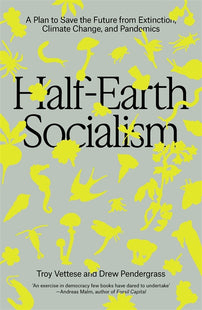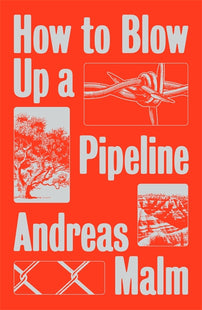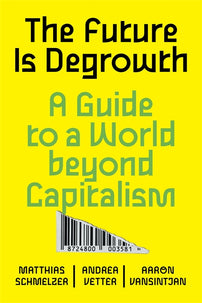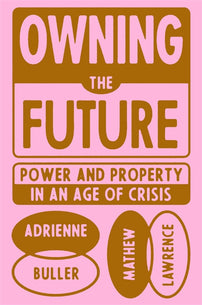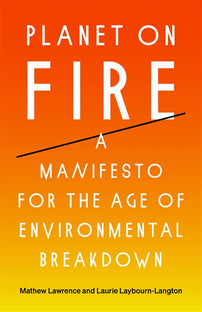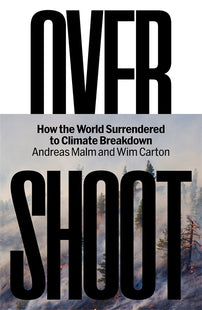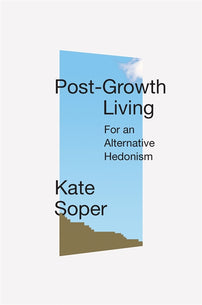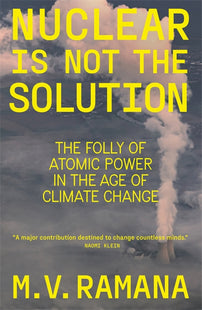Unbuilding Italy
On the occasion of World Earth Day Troy Vettese and Drew Pendergrass, share the preface for their Italian edition of Half Earth Socialism, that sets out how we might think about a global eco-socialist program – rewilding, veganism, renewable energy - in one country.

Rare amongst Marxist theorists, Antonio Gramsci saw ‘the history of industrialism’ less as a tale of progress than as a ‘struggle […] against the element of “animality” in man’. In this way Gramsci differed from other socialists, including Karl Marx, who saw capitalism as lowering workers to the level of animals rather than extinguishing our animality.
The contemporary mania for scientific management promoted by Frederick Taylor, which swept not only capitalist states but the Soviet Union too, was the epitome of this tendency, for its stated aim was to de-skill workers into ‘trained gorillas’. As a sceptic of Taylorism, Gramsci feared that workers’ animality would be replaced by ‘automatic and mechanical attitudes.’ His interest in preserving the animal within us made Gramsci a rare anti-Promethean thinker when much of the left was swayed by the modernist hubris of Stalinism.
He did not, however, push this insight to its logical conclusion and instead alighted mid-journey at the socialist pastoral rather than continue to the terminus of socialist de-civilization. Such a sentiment was demonstrated in the story Gramsci told his son Delio, relayed in a letter to his wife Giulia Schucht, of a mouse on a mountain. The mouse sought to give a child goat’s milk but was thwarted by the desiccation of the alpine pasture, which in turn was caused by speculators greedily deforesting the mountain. Gramsci ended the story with the trees and precipitation returning to the mountain, but his vision of socialism as a sort of bucolic idyll falls short of what is needed now to overcome the multifaceted environmental crisis nor nurture our long neglected animality.
For us, Gramsci raised an issue often ignored by socialists. If it would be foolhardy to further encourage the division of labor and mechanization of society that threaten our animality (which is another way to say our experience of nature), and we cannot return to peasant utopia or hunter-gatherer prehistory, then how should a socialist society relate to time? Socialism would allow our species to become introspective, to think about how we want to relate to ourselves, to nature, and to our past. We can decide to what degree we retain civilization and which parts to dismantle, even if such choices are still constrained in various ways. To cite an obvious example, the Earth could hardly support eight billion hunter-gatherers in a similar way to our four-million-strong species some six thousand years ago.
Our de-civilizing mission then is akin to the process of ‘unbuilding’, a term we use in Half-Earth Socialism to describe the work of exorcising the dead labor haunting a landscape. While reforesting an alpine environment, as in Gramsci’s bedtime story, would be part of the effort, unbuilding today requires much more ambition (or is it humility?) to address the multifaceted environmental crisis. Ripping up highways, crushing Lamborghinis, removing fences in the countryside, and decommissioning the vast bequests of the fossil-fuel age, are just a few of the myriad tasks needed to rebalance the Earth system. We most likely would have to dispense with goat milk too. De-civilizing ourselves and unbuilding the world require us to rethink the role of labour in Marxism. Most theorists have seen labor as the means to humanize the world—mixing our consciousness with nature to reconcile ourselves to it—yet this endeavor is fraught with not only environmental disaster but also the disenchantment of the world. In a fully dominated landscape, there is no potential for surprise, for an encounter with the sublime. By restoring the wilderness around us, perhaps we might bestir the animal within us and remember that we are only one species among many in a world far older and more complex than our ephemeral civilization.
All of this might sound romantic. Let us descend from the heights of abstraction and practically think through how these utopian aims could be made concrete. In Half-Earth Socialism, we argue that moneyless democratic planning will make clear the trade-offs between stable ecosystems and extraction for energy, agriculture, and production. We propose veganism, rewilding, and a renewable energy system as the main levers to transform our relationship to the natural world, with exact policies varying in space and time and subject to democratic deliberation. However, can we propose a thought experiment in eco-socialism in one country, say Italy.
[book-strip index="1"]
Let us begin with rewilding. Practitioners of this young science aim to restore ecosystems by returning extirpated species, removing invasives, and unfettering elementary cycles of flood and fire. Rewilding is a promising endeavor in Italy, as the country retains at least a modicum of its ecological integrity to unbuild upon. Compared to the graveyards of biodiversity in England, Germany, and the Netherlands, Italy is more akin to a hospice. While the core capitalist states lost their wolves and bears at various points during the last millennium, these species were never extirpated in Italy; the latter enjoys an ecological sorpasso over skittish England, which is yet to tolerate a carnivore larger than a badger.
There are over three thousand wolves in Italy, a remarkable recovery from the low point of just a hundred in the early 1970s. The Marsican bear, however, remains extremely endangered, approximately numbering sixty-five individuals. Similarly, there are only sixty beavers in Italy, a rather pitiful number for such an important ‘ecosystem engineer’ (even persnickety Albion has four hundred of the industrious rodents). While the group Rewilding Apennines has enjoyed some success helping species recover, including the Marsican bear, griffon vulture, white-clawed crayfish, and chamois, too many creatures are close to disappearing or have already done so. An incomplete litany of the near departed would include the white-tailed eagle, Egyptian vulture, European eel, blue shark, osprey, lynx, and Mediterranean monk seal.
All these animals depend upon a great deal of unbuilding to enable their recovery. Such paradoxical labor encompasses reintroductions and ‘coexistence corridors’ between far-flung habitats, but what would help the most is to increase protected areas. While ‘convivial conservation’ and agroecology can reduce the damage of existing food systems, they are hardly a universal solution to extinction.
We stress that there are no free lunches in conservation and the question remains who gets to eat. Either wild plants grow, which are then eaten by wild animals, which in turn are eaten by other wild animals, or domesticated plants and animals eat the energy from the sun and one another. In other words, who gets to use the net primary productivity of an ecosystem? It is worth remembering that livestock make up 62% of all mammalian biomass. Right now, far too many protected areas still have livestock and their accompanying vegetation, rather than wild flora and fauna. This is because many nature preserves hardly deserve the name. On paper, Italian nature should be well protected given that nature preserves compose nineteen per cent of national territory. Yet only a quarter of such preserves (i.e., five per cent of the Italian landmass, and even less for marine territory) proscribe farming, mining, forestry and other disturbances.
Scaling this measly fraction tenfold to create what entomologist E. O. Wilson called ‘Half-Earth’ would be extremely difficult without drastic changes to agricultural practices and energy systems. (Allow us a brief digression on Wilson’s term and the namesake of our book. Half-Earth is based on the mathematical relationship between habitat and biodiversity, where the latter is the fourth root of the former. So, if only five per cent of Italian territory is protected then over time only forty-seven per cent of species will survive [ ], but that fraction rises to eighty-four per cent if half is protected [ ]; which is the global goal for Half-Earth). In Half-Earth Socialism, we offer an astringent critique of conservation’s colonial history, but the question is what does radical and egalitarian conservation look like? Rather than answer this question, too many so-called ecosocialists appear quite willing to abjure conservation completely, along with decades of scientific insights, as if the biodiversity crisis did not matter.
While the details of a Half-Earth system in Italy remain to be worked out, activists and scientists have a good idea which areas should be protected. For instance, in Abruzzo, Maiella, Monti Pizzi and Monti Frentani boast significant biodiversity, while other important sites include the Gulf of Trieste, the Gorizian karst, and the Malpensa and Lonate heathlands. The E. O. Wilson Biodiversity Foundation has assembled a utopian atlas of existing and proposed sites for Half-Earth across the planet, with its Italian cartography focused on Sardina, the Alps, Tuscany, Sicily, and the Apennines. Expanding and better protecting Important Bird Areas, an initiative spearheaded by BirdLife International, could provide an avenue for selecting more sites.
In general, expanding existing protected areas is necessary, as most are currently too small for ecological viability: a quarter are smaller than 1 km2 and more than a third are between 1–10km2. Nor has site selection been particularly judicious, with montane ecosystems over-represented at the expense of low-lying areas that compete with farmland. Due to this problem, the Natura 2000 constellation—the backbone of Italy’s large but poorly managed park system—often do not have much biodiversity within them and areas that are rich in biodiversity are not included as Natura 2000 sites. How might one scour a country as densely populated as Italy for the scarce land needed for Half-Earth?
Wilson’s fantastical ambition offers a much-needed dose of inspiration, as too many other conservationists seem content with puny rather than pyrrhic victories. They seem unable to imagine a truly ecological Europe, as if industrial farming, tree plantations, highways, and warehouses are immutable features of the continent’s landscape. Most rewilding projects aspire to hawk bison burgers, attract glampers, and garner a few carbon credits.
Perhaps, a besieged family of wolves could seclude themselves in the pockets of wilderness surrounded by a thoroughly humanized landscape. What is worse, some conservationists speak of such half-measures as if they represented a profound environmental philosophy rather than a lack of ambition. Similarly, we find it perverse to cheer on the abandonment of farmland by smallholders, as some conservationists do, as if domestic Big Ag and foreign imports could be anything other than harbingers of environmental ruin. Regardless, abandoned farmland will never amount to more than a tiny fraction of what is needed for Half-Earth.
[book-strip index="2"]
Instead, we make the impractical, utopian suggestion that veganism is a much more radical and effective way to decarbonize agriculture and free up land for rewilding. A vegan organic agricultural system would take up approximately half as much land as Italy’s current meat-heavy conventional system does, making 50,000 km2 available for other uses. Lupine predation on livestock has spurred a backlash from farmers which has been exploited by fascists.
Rather than conceding vast swathes of Italy countryside permanently to pasture, with a smattering of wolves and wild herbivores, a better way to resolve this conflict would be to liquidate the class of livestock owners who, just like the employee at ENI, must take up other work. The end of animal husbandry would also mark an important reversal in the civilizing process over the last eight thousand years, and thus to free ourselves we free animals too. The Italian countryside is closer to this primordial past than benighted northern Europe because Italian farmers long reared cattle for their draught-power rather than for their flesh. For this reason, the Podolica and Maremma breeds have proven crucial to the back-breeding program to revive the aurochs—the wild cow.
It is exciting to imagine a rewilded Italy where herds of proud, free-ranging aurochsen wander the Italian countryside for the first time in centuries. Such a change would signify a small but concrete step in the de-civilization process.
Such visions, however, are not without their detractors. Indeed, in the three years since our book was published, no other issue has attracted such ire as our espousal of veganism — despite the minor role it plays in the overall argument. During the many events to promote the book, we found that vegans often considered socialism with an open mind, but all too often socialists unthinkingly dismissed veganism. If so-called radicals—who supposedly follow Marx’s dictum of ‘the ruthless criticism of everything existing’—cannot critically reflect whom they eat for their next meal, then one despairs of the general populace’s attitude towards omnivory. Yet, there is no reason to accept the sanguinity of contemporary diets as if they represented an imperturbable consensus, rather than the results from contingent capitalist avarice, not unlike society’s reliance on fossil fuels. Nor was veganism always so absent in the left’s political lexicon, indeed, it was a crucial component of countless utopian visions.
Of all places, veganism can hardly be unthinkable in Italy given that the country was a relative late comer to capitalist carnivory. We know this firsthand, as one of us has grandparents from Cassino who were poor farmers eating little meat before emigrating to Canada in the 1950s. As late as 1961 Italians ate only 30 kg of meat per capita—far below their contemporaries in Britian, let alone the United States—and by 2021 per capita meat supply reached 74 kg. Due to Italians’ ‘involuntary meatlessness’ that ended only recently, the national cuisine is replete with delicious dishes based on vegetables and legumes, unlike the fleshy bland palate of northern Europe.
Perhaps the relative novelty of carnivory in Italy makes veganism a much more contested issue than elsewhere in the global north. While Chiara Appendino’s plan to turn Turin into a ‘vegetarian city’ faltered and Elvira Savino’s attempt to ban childhood veganism was idiotic, these examples show that veganism is a live issue in Italy. Such a fact might not sound like much, but the first step to achieve social change is to drag an issue from the private sphere kicking and screaming into the public. At least this has happened in Italy, while veganism remains the ‘orphan of the left’ elsewhere even as fascists become increasingly fixated on their right to milk and meat. The fascists seem more aware than their oblivious rivals to their left how domination over animals reinforces an adherence to tradition, the proliferation of pseudo-science, and a glorification of violence.
There are also quite concrete and self-interested reasons for the planned obsolescence of the meat industry because it would not only allow spare animals the torment of premature deaths, but people too would live a bit longer. Northern Italians breathe some of the worst air in Europe. A survey of the air quality in more than three hundred European municipalities placed Italian towns in nine of the bottom fourteen ranks. More than one and a half times as many Italians die from air pollution every year (33,700) than French (20,300), even though the latter are more populous.
Much of Italy’s bad air comes from its factory farms that produce not only prodigious amounts of meat but also feces, which in turn causes the ammonia pollution that kills so many people. While governments have succeeded in drastically reducing emissions of sulfur dioxide (mainly from industry) and nitrous oxide (from cars), ammonia pollution has barely budged. Indeed, because of the non-linear chemistry behind the formation of airborne particulates, cuts to ammonia emissions are often the most efficient way to improve air quality, even in highly polluted regions. Instead of reining in factory farms, the Lombard government joined a coalition of the whinging, including the Netherlands, Catalonia, Madrid, and Austria to fight the European Union’s attempt to bring its air pollution guidelines into alignment with the World Health Organization. We live in a world where apathy for animals makes it possible not only to gorge on their flesh, but also to breathe in their shit.
Thus far we have considered rewilding and veganism in Italy, so let us turn to our third goal, a fully renewable energy system. Fossil fuels still make up 79.3 per cent of primary energy production in Italy, a ratio that has decreased only slightly since the turn of the century. Solar, wind, and geothermal only make up 7.5 per cent of the total mix. While the ‘white coal’ of hydropower has captured the Italian imagination for generations, its contribution is insignificant (2.6 per cent), its carbon neutrality questionable, and ecological consequences difficult to exaggerate. Even the quotidian act of flushing the sediments accumulated in reservoirs can have a disastrous effect on unlucky nearby streams, decimating trout populations. Dams on the Tiber have wiped out sturgeon, lamprey, and twaite shad.
Transport is another major source of carbon emissions, and Italian car ownership is a surprisingly grave problem given that most cities have been spared the American-style urban vivisection needed to make way for highways and parking lots. Nonetheless, there are 869 vehicles for every 1000 Italians: the third highest rate in Europe after Finland and Greece. Of course, Italy also relies on millions of foreigners combusting a great deal of carbon to travel there by airplane or cruise ship, habits that would have to be curtailed in an eco-socialist world.
These are but a few of the challenges Italy faces as it transitions to a renewable energy system, but we would be remiss not to emphasize the country’s strengths too. Energy-use is remarkably low, with the average Italian only using 3225 W per person, a number that has declined over the last two decades. Italy is already quite close to realizing the goal of the 2000 Watt Society, a framework we espouse in Half-Earth Socialism as a fair compromise between energy-use being cut in the global north and expanded in the south.
In 2011, Italy installed more solar power infrastructure than any other country and boasted the second most total installed capacity after Germany. Yet what a difference fourteen years make, for the sun-soaked colossus south of the Alps has stumbled since. While total solar capacity doubled between 2011 and 2023 to 30 GW, in 2024 China managed to deploy almost ten times that amount in a single year. The energy transition is happening far too slowly in Italy, as solar and wind compose only nine per cent of total energy production. Notably, one reason for renewables’ plodding pace has been land-scarcity, as solar power especially competes with pasture and agrarian land. Fascists seem to have decided to sacrifice decarbonisation on the altar of carnivory, as the decree no. 63 of May 2024 sharply limits the use of agricultural land for renewable energy projects.
An ecosocialist society would find these barriers to the energy transition easily surmountable, as it could build out infrastructure that is needed rather than what is profitable and moreover would free land by widespread veganism. After all, Italy’s potential in terms of renewable energy remains far from realized, especially since the power density of its photovoltaic plants would be fifty per cent greater than northern Europe. It also enjoys significant wind power resources around all of Sardinia, western Sicily, and Puglia.
If the goals of Half-Earth Socialism—or any utopian movement—are to ever be achieved they will need a broad and courageous coalition, and here too we can learn from Italy’s example. The GKN factory occupation in Florence shows how the traditional socialist goal of workers’ self-management can be combined with the exigencies of the present, namely climate change. The idiotic misconception that workers are wedded to the destruction of the Earth if it pays well enough is belied by the GKN workers shifting from making car parts to cargo bikes and solar panels.
Yet, such red-green coalitions are far too rare, as US teamsters’ support for oil pipelines or German autoworkers’ wariness towards electric cars have demonstrated. While the GKN workers and their allies in the climate and trade unionists movements have achieved much, the limits of their struggle are also clear. Ecosocialism will not come about through one factory occupation at a time, but a broader shift to a planned economy where production is decided democratically, and co-operatives no longer face the Diktat of the market as they strive to do what is right.
[book-strip index="3"]
To this end, we must revive the art of economic planning, a field of study that has lain dormant since the end of the Cold War but has slowly shown signs of life lately (including in the few years since our book came out). Italian thinkers and activists have much to contribute to this debate. The Club of Rome was led by Aurelio Peccei, an industrialist who paradoxically was an ardent anti-fascist, crypto-socialist, and expert on planning. He wrote his doctoral dissertation on the first five-year plan in the Soviet Union and then served as an executive at Fiat and Olivetti. He assembled the Club of Rome to work on the ‘world problematique’ of the interlocking social and environmental problems confronting countries on both sides of the Iron Curtain.
The first report published by Club of Rome, The Limits to Growth (1972), not only sold tens of millions of copies and shaped debates at the upcoming United Nations Conference on the Human Environment in Stockholm but was also the ur-computer simulation of the global environment. It is an enduring influence for our own modest efforts to contribute to the planning debate, but The Limits to Growth also influenced similar exercises studying north-south relations and, of course, the indispensable field of climate modelling.
A problem we are currently wrestling with is how can ecosocialism be something besides another form of planetary management. Ecosocialists all agree how capitalists have proven quite incompetent helmsmen of Spaceship Earth, but does ecosocialism merely promise a benign mastery of nature? To us, such an approach seems to manifest an even greater horror (or perhaps naïveté) than the capitalist domination of nature, for at least capitalism is undermined by its own contradictions, but that a rational socialism should strive to create ‘wholly enlightened earth […] radiant with triumphant calamity’, in Theodor Adorno and Max Horkheimer’s words, seems an even greater blasphemy against nature.
Gramsci’s insight that socialism should strive to foster our animality seems to us a truer and more profound endeavour. There has long been a tendency among socialists who see humans returning to nature as the end of history so that one could rien faire comme une bête.
At the height of Italy’s post-war boom, Luciano Bianciardi ruminated on its mirror-image in La Vita Agra. He imagined that in a society after capitalism humanity would reconcile itself with the Earth (the Lombards were the holdouts, ‘with bloodshot eyes, feverishly manipulating wheels and pistons’). ‘We shall be vegetarians’, Bianciardi augured, ‘we shall see car abandoned by the roadside for lack of fuel’ and allow farm animals to ‘wander freely and healthily among us, chickens, dromedaries, bats, sheep, etc., etc.’. His vision was not cornucopian but promised ‘everyone will have the first essential of comfortable living’ (a bed) and the opportunity to ‘cultivate noble passions’ (conversation, friendship, art, love).
The problem with utopianism is that we practitioners must be precise, technical, and practical to realize what seems impossibly fantastical. Bianciardi, the utopian, shows us what rewilding ourselves looks like and its implications for our relations with our fellow creatures on this Earth.
Troy Vettese is an environmental historian and a Ciriacy-Wantrup fellow at UC Berkeley. He studies the history of environmental economics, energy-systems, and animal life under capitalism. His writing has appeared in Bookforum, Critical Historical Studies, New Left Review, the Guardian, n+1 and many other popular and scholarly publications.
Drew Pendergrass recently completed his PhD in Environmental Engineering at Harvard University. His current research uses satellite, aircraft and surface observations of the environment to correct supercomputer models of the atmosphere. His environmental writing has been published in Harper’s, the Guardian, Jacobin, and Anthropocene Review
[book-strip index="4"]

